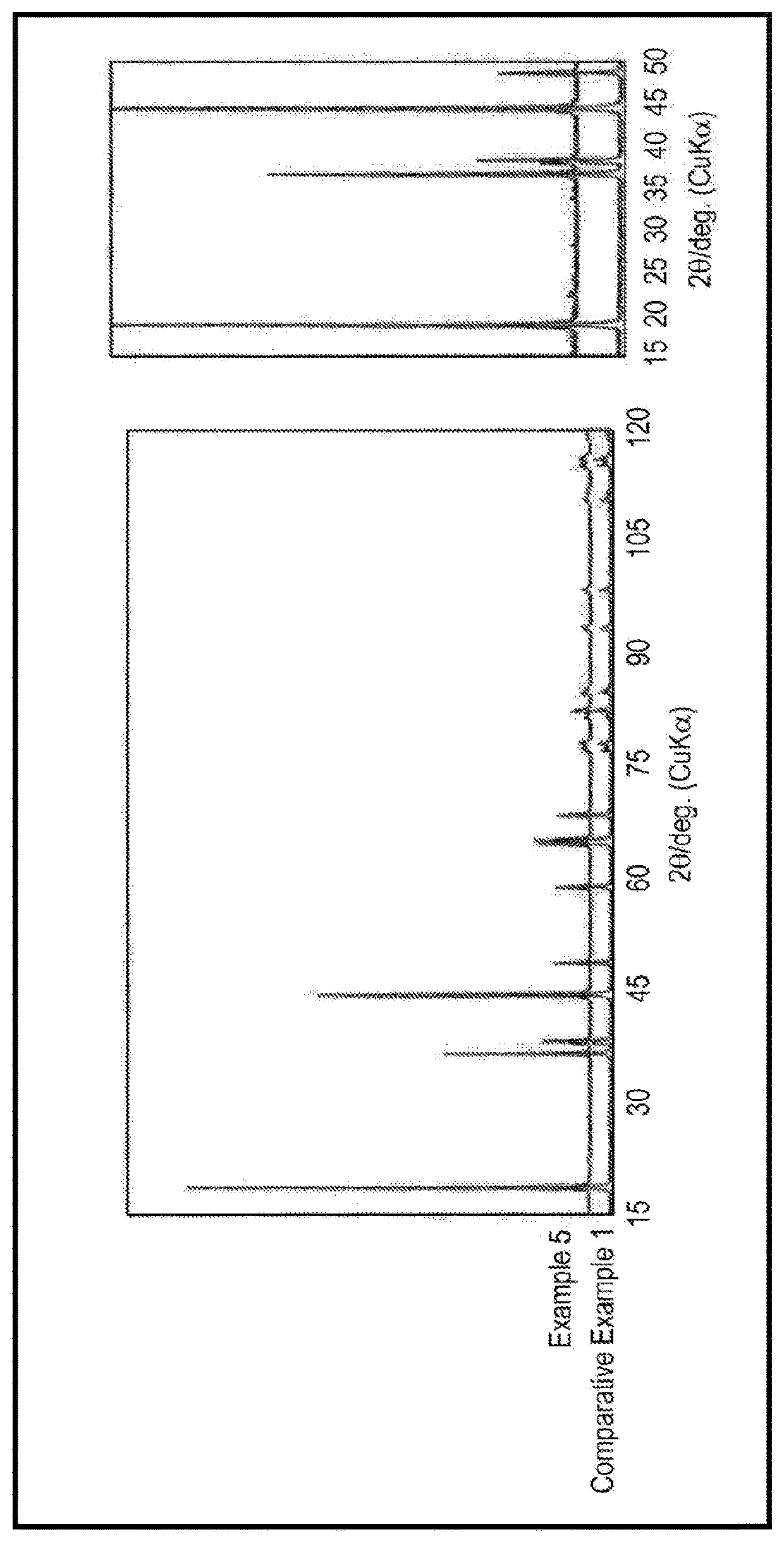Positive electrode active material for non-aqueous electrolyte secondary batteries, and non-aqueous electrolyte secondary battery
a technology of non-aqueous electrolyte secondary batteries and active materials, which is applied in the direction of positive electrodes, active material electrodes, cell components, etc., can solve the problems of increased direct-current resistance and increased charge/discharge capacity, and achieve the effect of reducing direct-current resistance and high ni conten
- Summary
- Abstract
- Description
- Claims
- Application Information
AI Technical Summary
Benefits of technology
Problems solved by technology
Method used
Image
Examples
example 1
[Preparation of Positive Electrode Active Material (Nickel-Excess Lithium Transition Metal Oxide)]
[0078]A nickel-cobalt-aluminum composite hydroxide represented by the composition formula of Ni0.88Co0.09Al0.03(OH)2 was obtained by coprecipitation and then heated at 500° C. to prepare a composite oxide. Next, LiOH, the composite oxide, and H3BO3 were mixed such that the molar ratio of Li, all transition metals (Ni, Co, and Al), and B was 1.04:1:0.01. Next, the mixture was subjected to two-step firing in oxygen current involving firing at 670° C. for 1 hour and firing at 760° C. for 3 hours, and then washed with water to remove impurities. The composition of the nickel-excess lithium transition metal oxide obtained as described above was determined by using an ICP emission spectrophotometer (available from Thermo Fisher Scientific Inc., product name “iCAP 6300”). As a result, it was found that the nickel-excess lithium transition metal oxide that is represented by the composition form...
example 2
[0082]A nickel-excess lithium transition metal oxide that is represented by the composition formula of Li0.96Ni0.88Co0.09Al0.03O2 and to which 0.3 mol % of lithium borate was attached was produced in the same manner as in Example 1 except that LiOH, the composite oxide, and H3BO3 were mixed in preparation of a positive electrode active material such that the molar ratio of Li, all transition metals (Ni, Co, and Al), and B was 1.1:1:0.03. This nickel-excess lithium transition metal oxide was used as a positive electrode active material of Example 2 to prepare a non-aqueous electrolyte secondary battery (test cell A2) as in Example 1.
example 3
[0083]A nickel-excess lithium transition metal oxide that is represented by the composition formula of Li0.97Ni0.88Co0.09Al0.03O2 and to which 0.3 mol % of lithium borate was attached was produced in the same manner as in Example 1 except that LiOH, the composite oxide, and H3BO3 were mixed in preparation of a positive electrode active material such that the molar ratio of Li, all transition metals (Ni, Co, and Al), and B was 1.15:1:0.03. This nickel-excess lithium transition metal oxide was used as a positive electrode active material of Example 3 to prepare a non-aqueous electrolyte secondary battery (test cell A3) as in Example 1.
PUM
| Property | Measurement | Unit |
|---|---|---|
| diameter | aaaaa | aaaaa |
| compression breaking strength | aaaaa | aaaaa |
| porosity | aaaaa | aaaaa |
Abstract
Description
Claims
Application Information
 Login to View More
Login to View More - R&D
- Intellectual Property
- Life Sciences
- Materials
- Tech Scout
- Unparalleled Data Quality
- Higher Quality Content
- 60% Fewer Hallucinations
Browse by: Latest US Patents, China's latest patents, Technical Efficacy Thesaurus, Application Domain, Technology Topic, Popular Technical Reports.
© 2025 PatSnap. All rights reserved.Legal|Privacy policy|Modern Slavery Act Transparency Statement|Sitemap|About US| Contact US: help@patsnap.com

